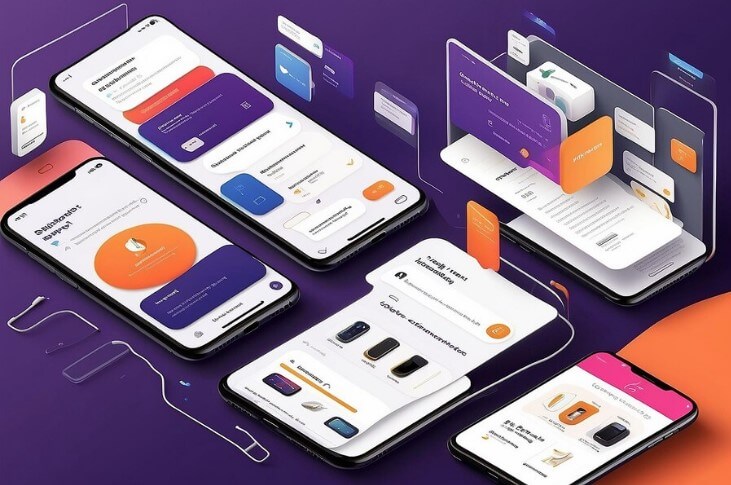The top Custom mobile app development technologies include a mix of programming languages, frameworks, development environments, and supporting tools that are widely used for their efficiency, flexibility, and strong community support. Here’s an overview of the leading technologies in the mobile app development landscape:
Native App Development
Swift (iOS):
Description: Apple’s programming language is designed for iOS, macOS, watchOS, and tvOS apps.
Advantages: Fast performance, safety features, modern syntax, and extensive support from Apple.
Use Case: High-performance and feature-rich iOS apps.
Kotlin (Android):
Description: Officially supported by Google as the preferred language for Android development.
Advantages: Concise syntax, null safety, interoperability with Java, and modern language features.
Use Case: Modern Android app development.
Cross-Platform Development Frameworks
React Native:
Description: Developed by Facebook for building mobile apps using JavaScript and React.
Advantages: Code reuse across iOS and Android, large community support, and a rich ecosystem of libraries and tools.
Use Case: Cross-platform apps with native-like performance.
Flutter:
Description: Google’s UI toolkit for building natively compiled applications for mobile, web, and desktop from a single codebase.
Advantages: Fast development with hot reload, expressive UI, and high performance.
Use Case: Visually attractive and highly interactive cross-platform apps.
Xamarin:
Description: A Microsoft-owned framework for building cross-platform apps using C# and DotNET.
Advantages: Native performance, shared codebase across platforms, and integration with Visual Studio.
Use Case: Enterprise applications requiring robust performance and integration with Microsoft’s ecosystem.
Development Environments
Xcode (iOS):
Description: The official integrated development environment (IDE) for Apple’s platforms.
Advantages: Comprehensive toolset, seamless integration with Swift and Objective-C, and powerful debugging and performance tools.
Use Case: Essential for iOS/macOS development.
Android Studio:
Description: The official IDE for Android development, based on JetBrains’ IntelliJ IDEA.
Advantages: Rich feature set tailored for Android, excellent debugging tools, and integrated support for Kotlin.
Use Case: Best for Android development.
Visual Studio:
Description: A comprehensive IDE from Microsoft that supports various programming languages and platforms, including Xamarin for mobile development.
Advantages: Powerful debugging and development tools, extensive plugin ecosystem, and support for multiple platforms.
Use Case: Cross-platform development, especially with Xamarin.
Supporting Tools and Services
Firebase:
Description: A platform developed by Google for creating mobile and web applications.
Advantages: Real-time database, authentication, cloud storage, analytics, and more.
Use Case: Building serverless apps with real-time data synchronization.
Fastlane:
Description: An open-source tool that automates building and releasing iOS and Android apps.
Advantages: Simplifies the deployment process, integrates with CI/CD pipelines, and supports multiple deployment platforms.
Use Case: Streamlining the app release process.
Design and Prototyping Tools
Figma:
Description: A web-based design tool for collaborative UI/UX design.
Advantages: Real-time collaboration, vector-based design, and robust prototyping features.
Use Case: Teams working on mobile app design.
Adobe XD:
Description: A vector-based user experience design tool for web and mobile apps.
Advantages: Easy-to-use interface, integration with other Adobe products, and powerful prototyping tools.
Use Case: Designing and prototyping mobile applications.
DevOps and CI/CD Tools
Jenkins:
Description: An open-source automation server for building, testing, and deploying code.
Advantages: Highly customizable, large plugin ecosystem, and extensive community support.
Use Case: Automating various stages of app development and deployment.
Bitrise:
Description: A CI/CD platform specifically designed for mobile apps.
Advantages: Mobile-centric workflows, easy integration with various tools, and fast build times.
Use Case: Continuous integration and delivery of mobile applications.
These technologies represent the cutting edge of mobile app development, providing developers with the tools they need to build robust, efficient, and user-friendly applications.





Comments